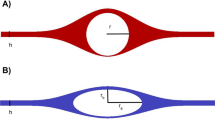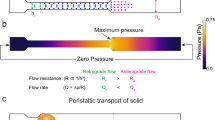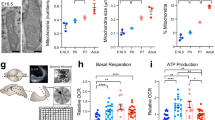Abstract
CEREBROSPINAL fluid (CSF) is formed in the choroid plexuses, in the ventricular cavities through ependymal walls1 and in the subarachnoid space2,3. Some authors3,4, consider that subarachnoid fluid production constitutes 40% or more of the total secreted CSF. The formation of this subarachnoid fluid can be attributed to the pial vessels or be considered as a collection of extracellular fluid produced by the parenchymal capillaries, passing to the subarachnoid space through the pial membrane. Endothelial cells of the respective vessels should possess specific transport properties if they produce a fluid which might be of similar composition to that formed by the plexus. Absorption of the fluid and selective transfer of substances from CSF to blood should also be accomplished. The aim of this investigation was to explore which of the two, pial vessels or parenchymal capillaries, was the preferential route.
This is a preview of subscription content, access via your institution
Access options
Subscribe to this journal
Receive 51 print issues and online access
$199.00 per year
only $3.90 per issue
Buy this article
- Purchase on Springer Link
- Instant access to full article PDF
Prices may be subject to local taxes which are calculated during checkout
Similar content being viewed by others
References
Pollay, M., and Curl, F., Am. J. Physiol., 213, 1031 (1967).
Bering, E. A., and Sato, O., J. Neurosurg., 20, 1050 (1963).
Fernstermacher, J. D., Li, C., and Levin, V. A., Expl. Neurol., 27, 101 (1970).
Sato, O., and Bering, E. A., Brain Nerve, Tokyo, 19, 883 (1967).
Levin, E., and Kleeman, C. R., Proc. Soc. exp. Biol. Med., 135, 685 (1970).
Wright, P. M., Nogueira, G. J., and Levin, E., Expl. Brain Res., 13, 294 (1971).
Yudilevich, D. L., and De Rose, N., Am. J. Physiol., 220, 841 (1971).
Merlis, J. K., Am. J. Physiol., 131, 72 (1940).
Yudilevich, D. L., De Rose, N., and Sepulveda, F. V., Brain Res., 44, 569 (1972).
Oldendorf, W. H., Am. J. Physiol., 221, 1629 (1971).
Lorenzo, A. V., and Snodgrass, S. R., J. Neurochem., 19, 1287 (1972).
Bertler, A., Falck, B., Owman, Ch., and Rosengreen, E., Pharmac. Rev., 18, 369 (1960).
Van Harreveld, A., and Ahmed, N., Brain Res., 11, 32 (1968).
Kaplan, H. A., and Ford, D. H., The Brain Vascular System, 152 (Elsevier Press, Amsterdam, 1966).
Author information
Authors and Affiliations
Rights and permissions
About this article
Cite this article
LEVIN, E., SEPULVEDA, F. & YUDILEVICH, D. Pial vessels transport of substances from cerebrospinal fluid to blood. Nature 249, 266–268 (1974). https://doi.org/10.1038/249266a0
Received:
Issue Date:
DOI: https://doi.org/10.1038/249266a0
Comments
By submitting a comment you agree to abide by our Terms and Community Guidelines. If you find something abusive or that does not comply with our terms or guidelines please flag it as inappropriate.



